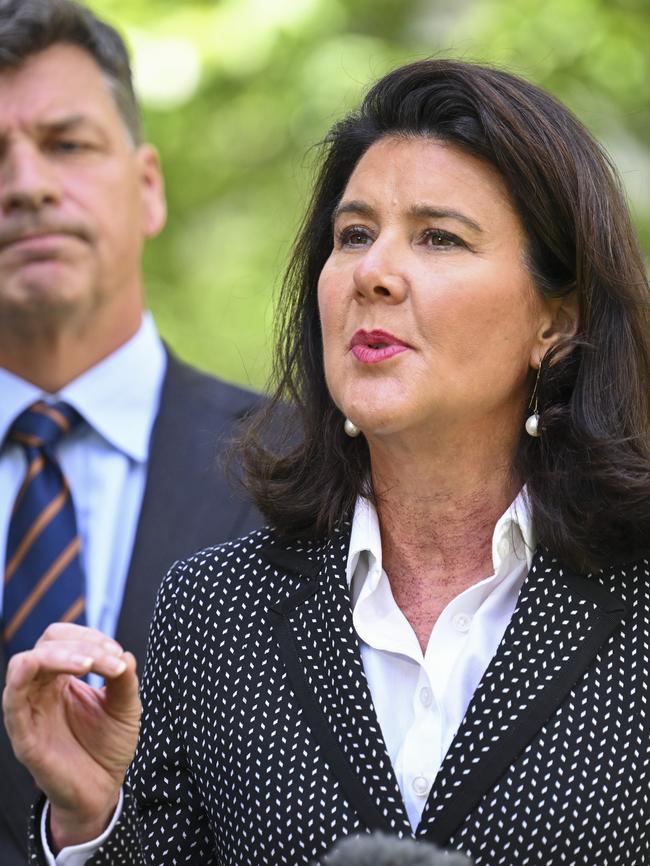Public service ‘work from home’ numbers on the rise, but is that good for taxpayers?


The private sector is rapidly concluding that we can’t afford the kind of universal work-from-home policies spawned by the Covid pandemic. JP Morgan chief executive Jamie Dimon now regrets his legendary obscenity-laden rant about WFH and offers a more moderate view, but there is no doubting that JP Morgan is not a firm for those who want to Zoom in from the dining table. Dimon’s key point now is that his company, not the worker, will decide what works best for his company and his clients.
Almost two years ago, NAB’s then chief executive, Ross McEwan, called time on WFH for his senior executives, and many other big companies, in Australia and globally, have been tightening the leash too. It’s a safe bet that private employers are better at gauging productivity gains than their workers.
As Dimon said in February, “don’t give me this shit that ‘work from home Friday’ works. I call a lot of people on Friday. There’s not a goddamn person you can get a hold of”.
Liberal senator Jane Hume was simply reflecting these private sector trends when she said last week that a Coalition government would review public service WFH arrangements. That’s all it took to unleash the dogs of war.
Hume forces us to ask several critical questions. Should WFH be a right? Does WFH reduce or enhance productivity? Are there nonetheless other benefits that might offset the productivity loss? If the public sector keeps WFH benefits not generally available in the private sector, what equity and efficiency issues does that raise? Will Canberra, already a coddled bubble of privileged public servants, become even more out of touch with Australia at large, and increasingly less able to understand the people for whom it regulates and to whom it provides services?
Thanks to a union award, Australian public servants work very differently from most Australians employed in the private sector. Work-from-home arrangements have, effectively, become an individual right. Under the Australian Public Service’s All Roles Flexible policy, flexibility applies to all roles in the APS and those rights are in addition to entitlements in the Fair Work Act 2009.

Here’s what we know after Hume asked, during Senate estimates, for WFH figures from various bureaucracies. At the Department of Infrastructure, Transport, Regional Development, Communications, and the Arts, 59.7 per cent of staff have WFH arrangements in the ACT. At the Department of Finance more than 26 per cent of public servants work three days in the office, two days from home, and 2 per cent never work in the office. At the Australian Electoral Commission, 46.6 per cent work at home two days a week, and 8.6 per cent work solely from home. At the Commonwealth Superannuation Corporation, 28 per cent never go to the office. At the Digital Transformation Agency 28 per cent work from home two or three days, while 3 per cent never work at the office.
Even Finance Minister Katy Gallagher thinks there’s an issue; some months back she asked the Australian Public Service Commission to gather WFH numbers from government departments and agencies.
Interestingly, data currently collected by that same Commission for its annual State of the Service Report shows that 21 per cent of its staff never work at the office, and 45 per cent of its staff work from home “some of the time on a regular basis”.
These State of the Service Reports are light on detail. The 2023-2024 Report shows that across all APS departments and agencies – except Foreign Affairs and Trade and Services Australia – most public servants work from home “some of the time on a regular basis”.
A breakdown of actual days at home and in the office would be more helpful to better understand why and by how much the public sector is out of kilter with the private sector.
Some want to turn this into a culture war. That’s a familiar tactic among people who are uncomfortable with robust debates about important matters. Remember the History Wars? And the Reading Wars? Some are doubling up, claiming a focus on WFH is a gender war too. There are no wars here – of any kind. If you’re already whipping up fear and hysteria, you’re probably afraid of the merits of debate.

While it’s true that women, especially those with children and other caring roles, likely benefit from generous public service WFH arrangements, there is still an important public policy issue about workplace productivity.
Productivity Commissioner Danielle Wood said we can’t ignore the benefits of the past two years where the increase in women working full-time is bigger than in the previous 40 years. She also pointed to research showing that working remotely five days a week hurts productivity. Wood said there is likely a “sweet spot” of working three days in the office, two days at home. “It looks like the productivity impacts of that are pretty negligible, or slightly positive.”
Gallagher said the Coalition’s policy to better realign WFH arrangements in the public service with private sector trends was an attack on women. She needs to spend more time wearing her Minister for Finance hat. Her other sectional portfolios – Minister for Women, Minister for Government Services, Minister for Public Services – are obstructing a clear focus on the national interest.
The private sector is moving away from the Covid-driven working-from-home arrangements, while public service WFH numbers are on the rise – 22 per cent in 2019, 55 per cent during Covid, and now 61 per cent. This trend in the public service is a legitimate issue for anyone concerned about the country’s tanking productivity.
No doubt, WFH arrangements suit many workers. But do they suit the employer? Increasing numbers of private sector employers say it doesn’t. But no public sector head could possibly tell the truth – even if they wanted to.

With growth in public sector jobs disproportionately outstripping private sector job growth over the course of 2024, we do need to better understand the consequences of WFH.
Research shows when employees work from home, they receive less coaching and mentoring, and have fewer one-on-one meetings with supervisors. Increased communication and co-ordination costs associated with WFH also lead to productivity declines. Research has also shown that workers with children at home worked more hours than those without children, and suffered a bigger decline in productivity than those without children.
Let’s talk about culture too – without adding the “war” suffix. There is an issue about public service disconnect. When growing numbers of public servants work very differently to the rest of Australia’s workforce, how does that impact their ability to serve the public? Will policymakers execute the most sensible policies if their working conditions are much cushier than the rest of the country? What about service providers? Aligning public and private workforces will surely lead to better-aligned outcomes for the public.
Labor can’t come clean on this given its obvious conflicts when negotiating public service wages and conditions. Labor is effectively negotiating with the unions that fund it. How can we know that a Labor government is looking after taxpayer interests first?
That’s why Jane Hume had to step up. And we deserve better than reflexive, half-baked class and gender war slogans aimed at exciting emotions to blot out reasoned debate.





The cost-of-living crisis should be shedding our luxury beliefs. Falling productivity is making its way from obscure pages of the financial press and economic journals to mainstream media. We are starting to wake up to the fact that if we want a better life, we may have to work a bit harder for it, maybe bid goodbye to some perks we’d love to keep but can’t afford. But this reality check isn’t arriving equally across the country.